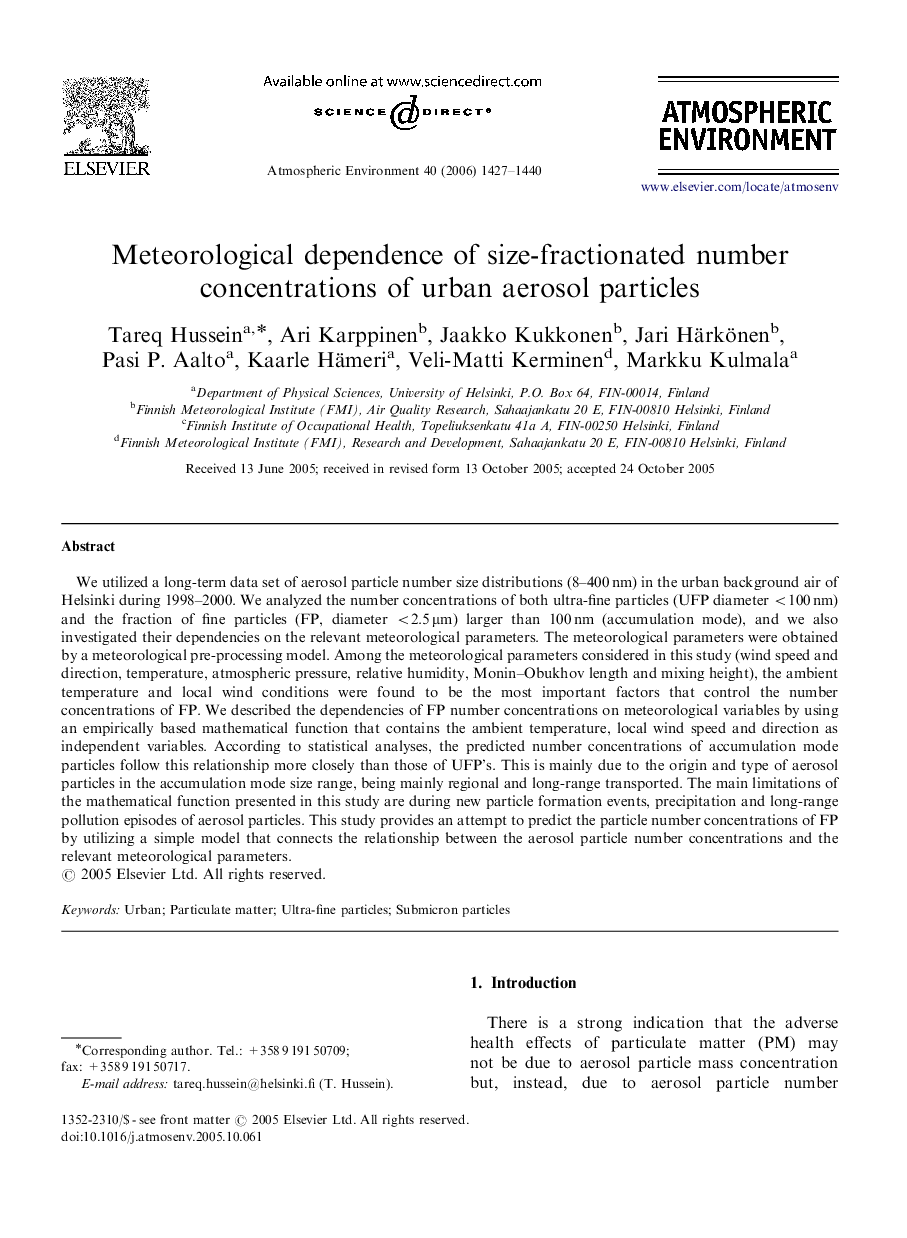| Article ID | Journal | Published Year | Pages | File Type |
|---|---|---|---|---|
| 4444649 | Atmospheric Environment | 2006 | 14 Pages |
We utilized a long-term data set of aerosol particle number size distributions (8–400 nm) in the urban background air of Helsinki during 1998–2000. We analyzed the number concentrations of both ultra-fine particles (UFP diameter <100 nm) and the fraction of fine particles (FP, diameter <2.5 μm) larger than 100 nm (accumulation mode), and we also investigated their dependencies on the relevant meteorological parameters. The meteorological parameters were obtained by a meteorological pre-processing model. Among the meteorological parameters considered in this study (wind speed and direction, temperature, atmospheric pressure, relative humidity, Monin–Obukhov length and mixing height), the ambient temperature and local wind conditions were found to be the most important factors that control the number concentrations of FP. We described the dependencies of FP number concentrations on meteorological variables by using an empirically based mathematical function that contains the ambient temperature, local wind speed and direction as independent variables. According to statistical analyses, the predicted number concentrations of accumulation mode particles follow this relationship more closely than those of UFP's. This is mainly due to the origin and type of aerosol particles in the accumulation mode size range, being mainly regional and long-range transported. The main limitations of the mathematical function presented in this study are during new particle formation events, precipitation and long-range pollution episodes of aerosol particles. This study provides an attempt to predict the particle number concentrations of FP by utilizing a simple model that connects the relationship between the aerosol particle number concentrations and the relevant meteorological parameters.
